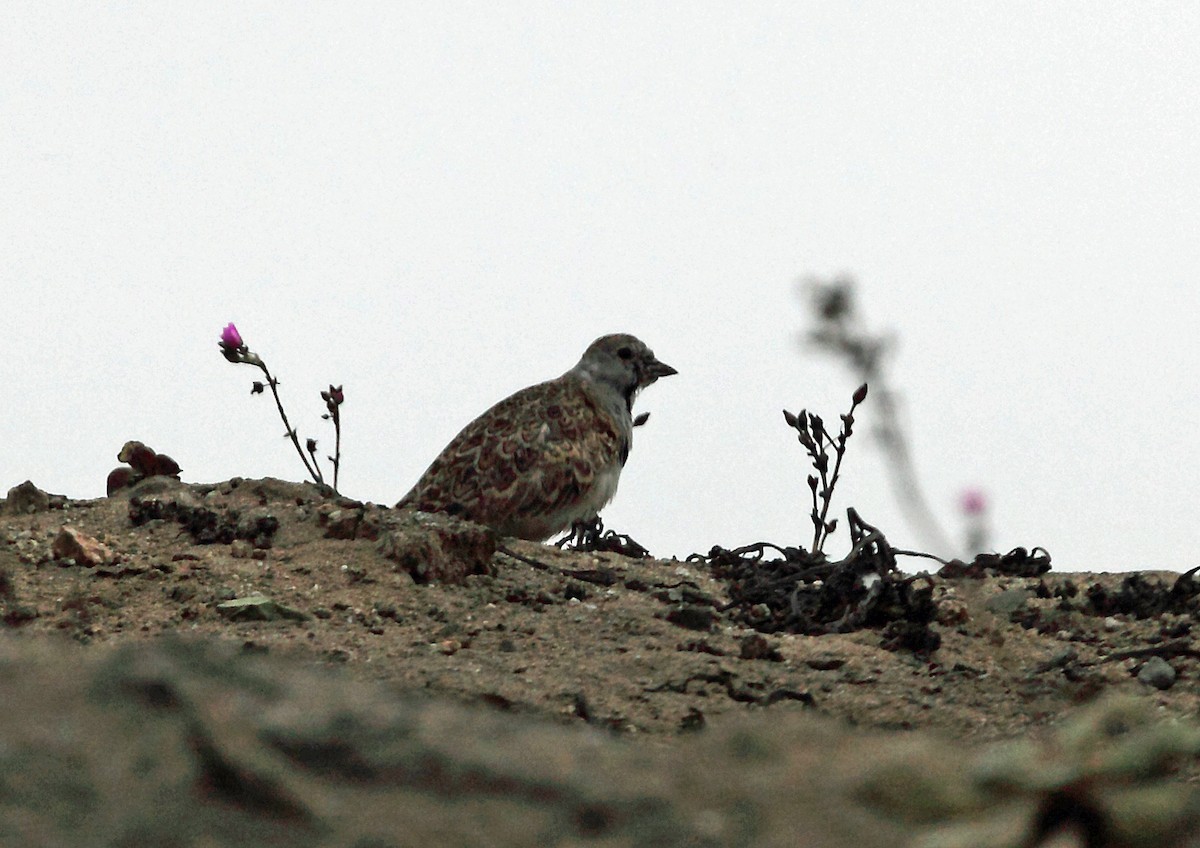Least Seedsnipe
A species of Lesser Seedsnipes Scientific name : Thinocorus rumicivorus Genus : Lesser Seedsnipes
Least Seedsnipe, A species of Lesser Seedsnipes
Botanical name: Thinocorus rumicivorus
Genus: Lesser Seedsnipes
Content
Description General Info
 Photo By Nigel Voaden
Photo By Nigel Voaden Description
The least seedsnipe is the smallest member of the Thinocoridae family. They have short tails and long pointed wings. Their legs and toes are a dull greenish yellow. The beak of the least seedsnipe is an ashy color and is conical like that of a finch or a sand grouse. Adult males have a gray face, neck, and breast, and have black lines at the center of the throat that form an inverted “T” shape. The eyes are a dark gray color. 
Size
19 cm
Nest Placement
Ground
Feeding Habits
Least Seedsnipe's diet consists primarily of seeds, leaves, and buds. Exhibiting unique vegetarian habits, least Seedsnipe feeds through rapid snapping from a crouch or stretching to nibble taller flora. Least Seedsnipe possesses specialized digestive adaptations — a crop, a gizzard, and long caeca — facilitating this diet. Water intake is primarily via succulent plant consumption, with infrequent drinking.
Habitat
The habitat of least Seedsnipe encompasses sparsely vegetated plains and arid zones typically composed of sandy areas with scattered bunchgrass or low herbs. These environments often include coastal plains, grazed lands, and dried-up lake shores with expanses of bare ground. Least Seedsnipe tends to favor lowland regions where it can exploit areas such as croplands during the non-breeding season. Additionally, least Seedsnipe is known to occupy regions with sparse fog vegetation in coastal deserts and is often seen alongside roads and in fields with minimal annual vegetation.
Dite type
Herbivorous
General Info
Feeding Habits
Bird food type
Behavior
Male seedsnipe will commonly perch on a prominent bush or fence post to deliver nuptial calls that sound like a series of a “rapid pu-pu-pu-pu-pu”s, very similar to that of the Common Snipe. Seedsnipes are well-adapted to arid environments and show no increases in water loss between 20 and 36 °C. The thermoneutral zone extends from 33 to 38 °C in this species, but they have the capacity to dissipate heat through evaporative water loss up to 42 °C. Their metabolic rate is 38% lower than other non-passerine birds of similar body mass (~50 g), reducing the contribution to the total heat budget. 
Species Status
This species has an extremely large range and is one of the commonest birds of southern Patagonia. According to the IUCN, the population appears stable. It has therefore been labeled as species of Least Concern. 

 Photo By Nigel Voaden
Photo By Nigel Voaden Scientific Classification
Phylum
Chordates Class
Birds Order
Shorebirds Family
Seedsnipes Genus
Lesser Seedsnipes Species
Least Seedsnipe